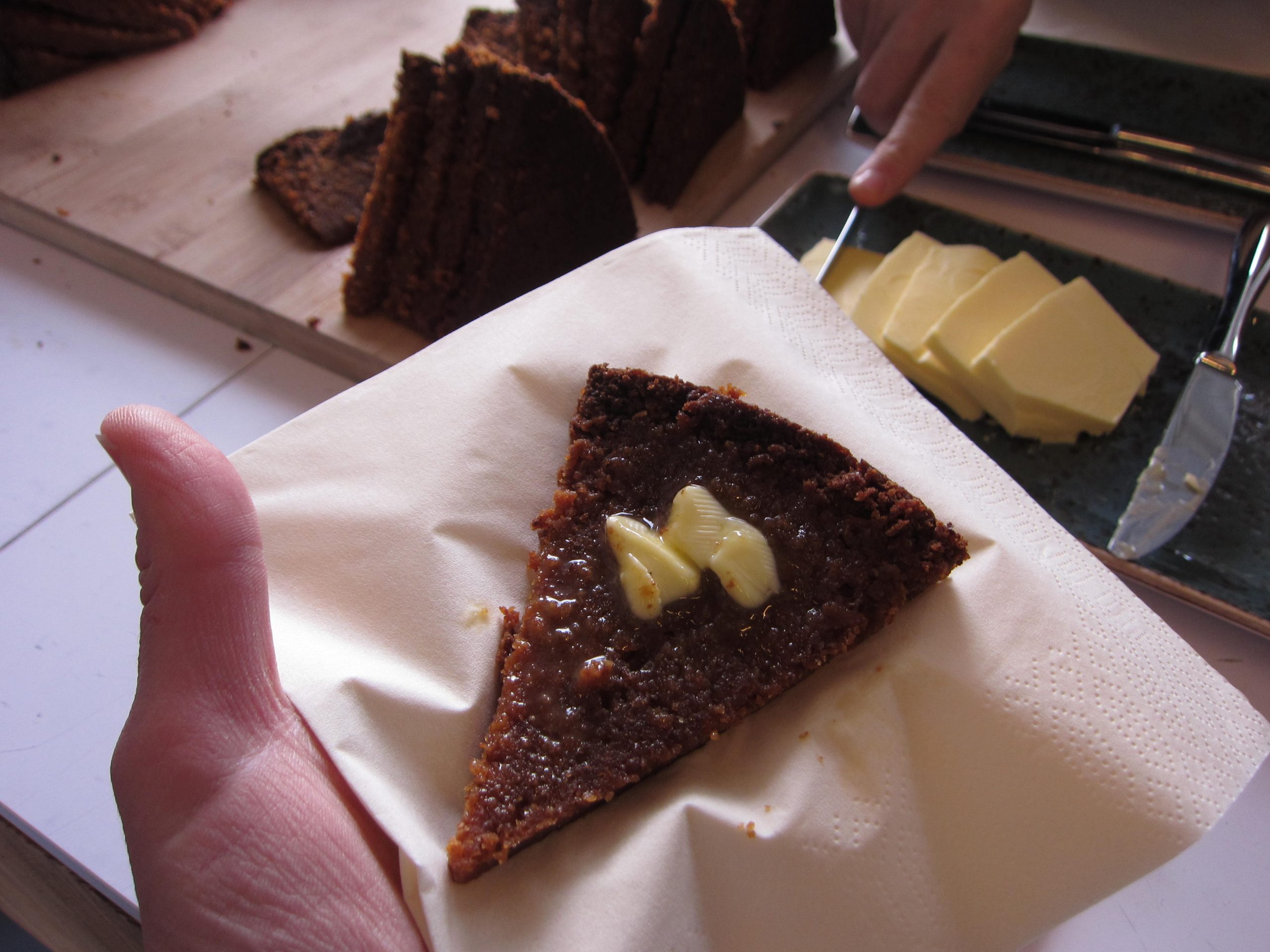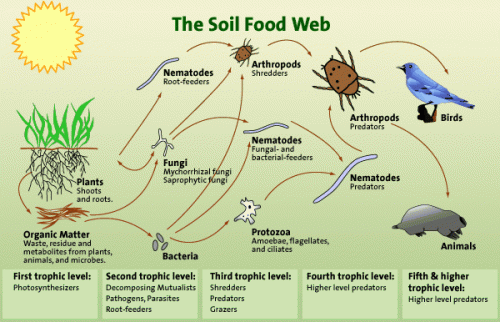Nothing grows outside in Iceland in the winter. The land is blanketed with snow and scarcely a twig is visible for miles. Lava rock punches through the landscape and geysers power the entire island. Iceland gets 100% of its energy from either wind, geothermal, or hydroelectric power sources. And you can swim in the runoff as a health benefit. It’s another world.
I’ll bet you’re wondering why I’m writing about Iceland. I was there last week for a scant 2 days, but long enough to see its beauty and explore a nifty centuries-old tradition of baking rye bread in the geothermal lava sand on the shore of a nearby lake at Laugarvatn Fontana Geothermal baths.
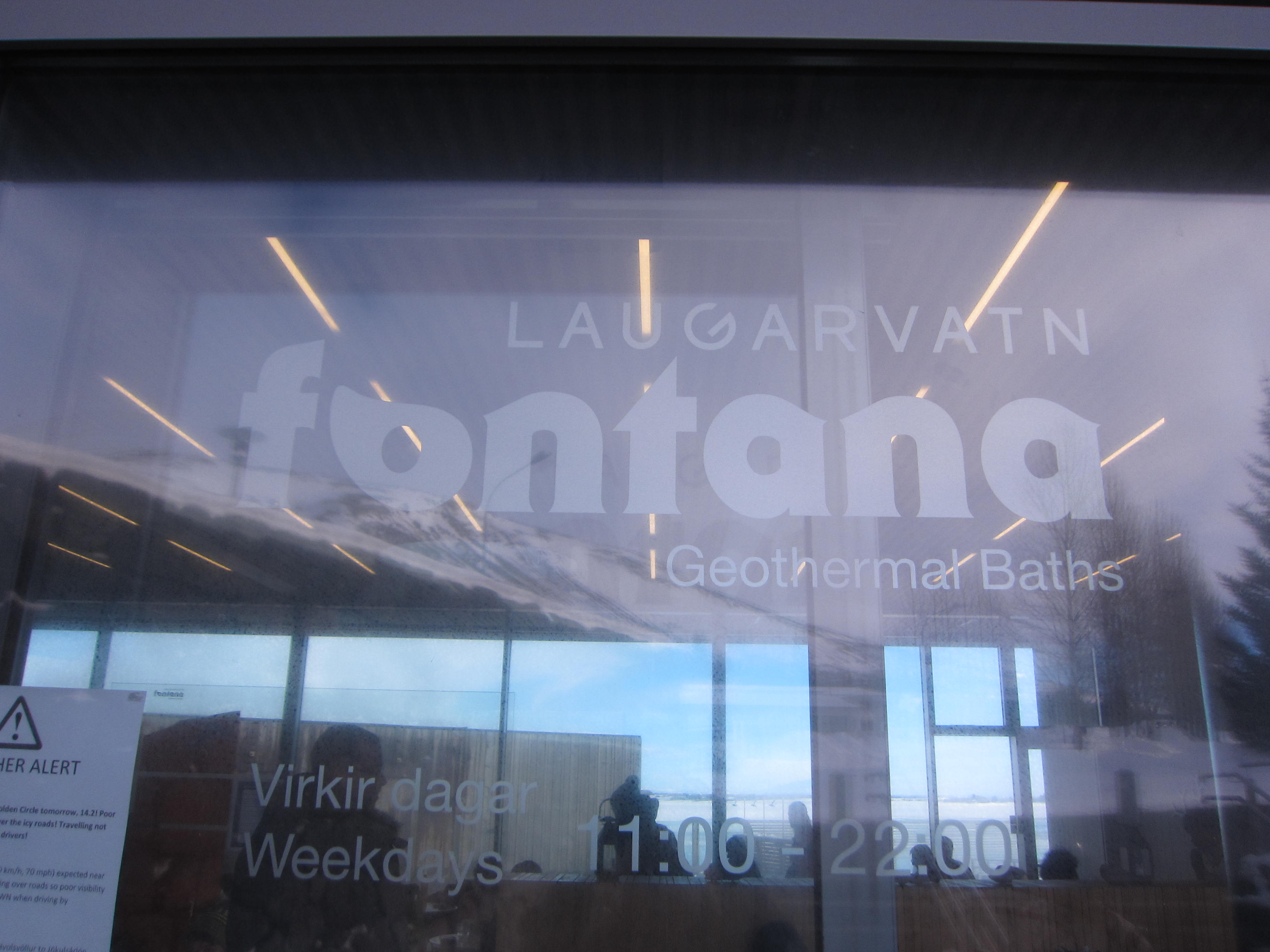
After lingering in pools of different temperatures (something for everyone’s comfort level), and sitting in the steam sauna while watching visitors take a cold plunge in the lake (craziness personified) through the floor-to-ceiling window that overlooked the frozen waters, we gathered in the lobby to await our guide for the bread bake.
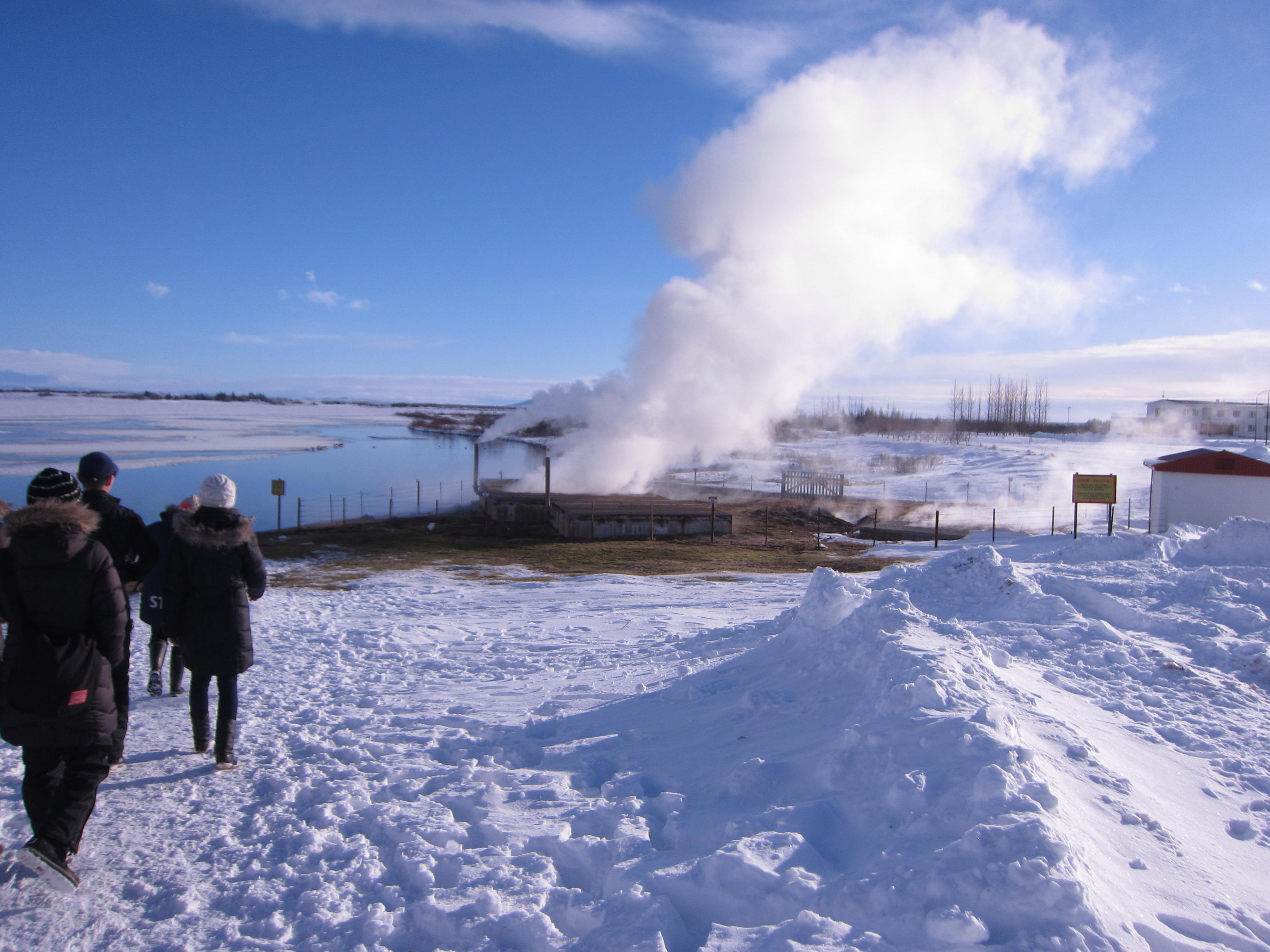
Our guide carried a shovel, and a stock pot that was wrapped in cellophane. She wore galoshes, a heavy coat, and gloves.

We proceeded to walk along the narrow boardwalk (flooded with icy water further down the path – waterproof shoes are a must here!) to witness our guide “putting the bread in the oven”.
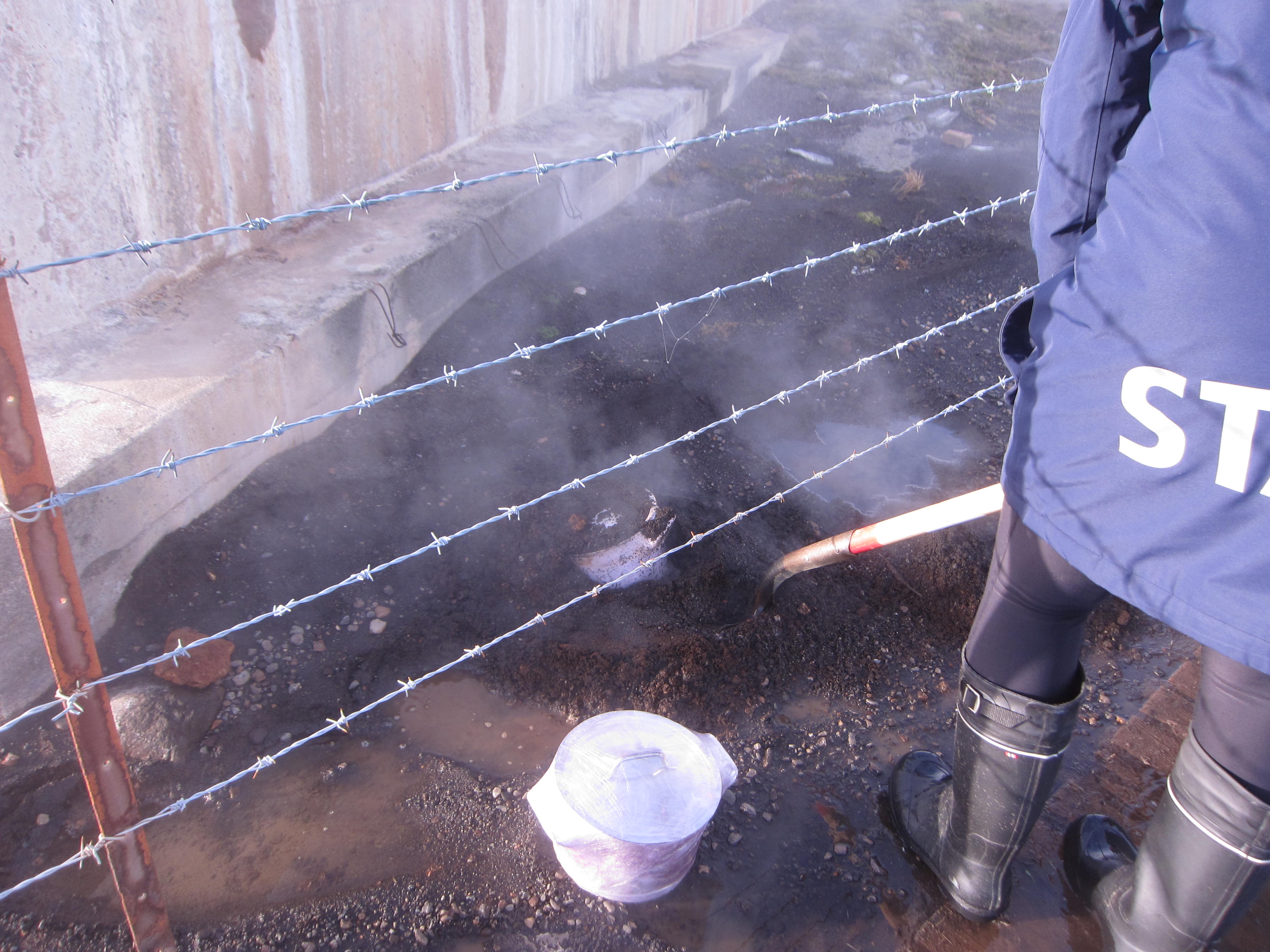
The geyser and structure covering it are surrounded by barbed wire, which makes for less-than-attractive photos, but it also happens to be the perfect location for baking bread. First our guide dug up a pot from yesterday’s bread bake. She dug a shallow hole to uncover a stock pot similar to the one she carried out from the baths.
She explained that the water and sand are 100º C (212º F), bubbling up from the earth. At that temperature, it takes 24 hours to bake a loaf of rye bread. So each day they bury a new pot and dig it up the next day.
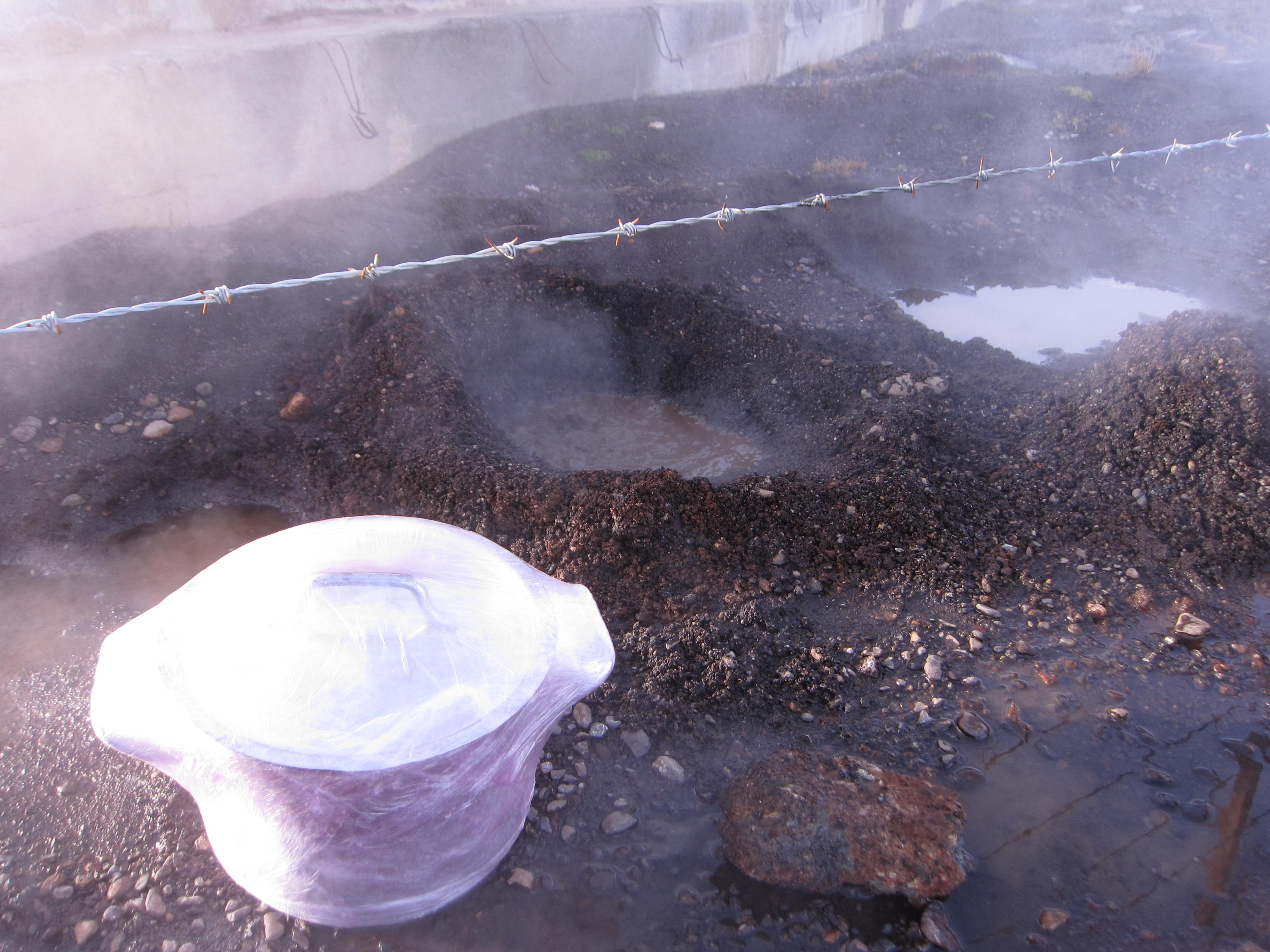
She shoveled a few heaps of wet sand from the hole to make it deep enough for our pot. Then she slid the pot into the hole.
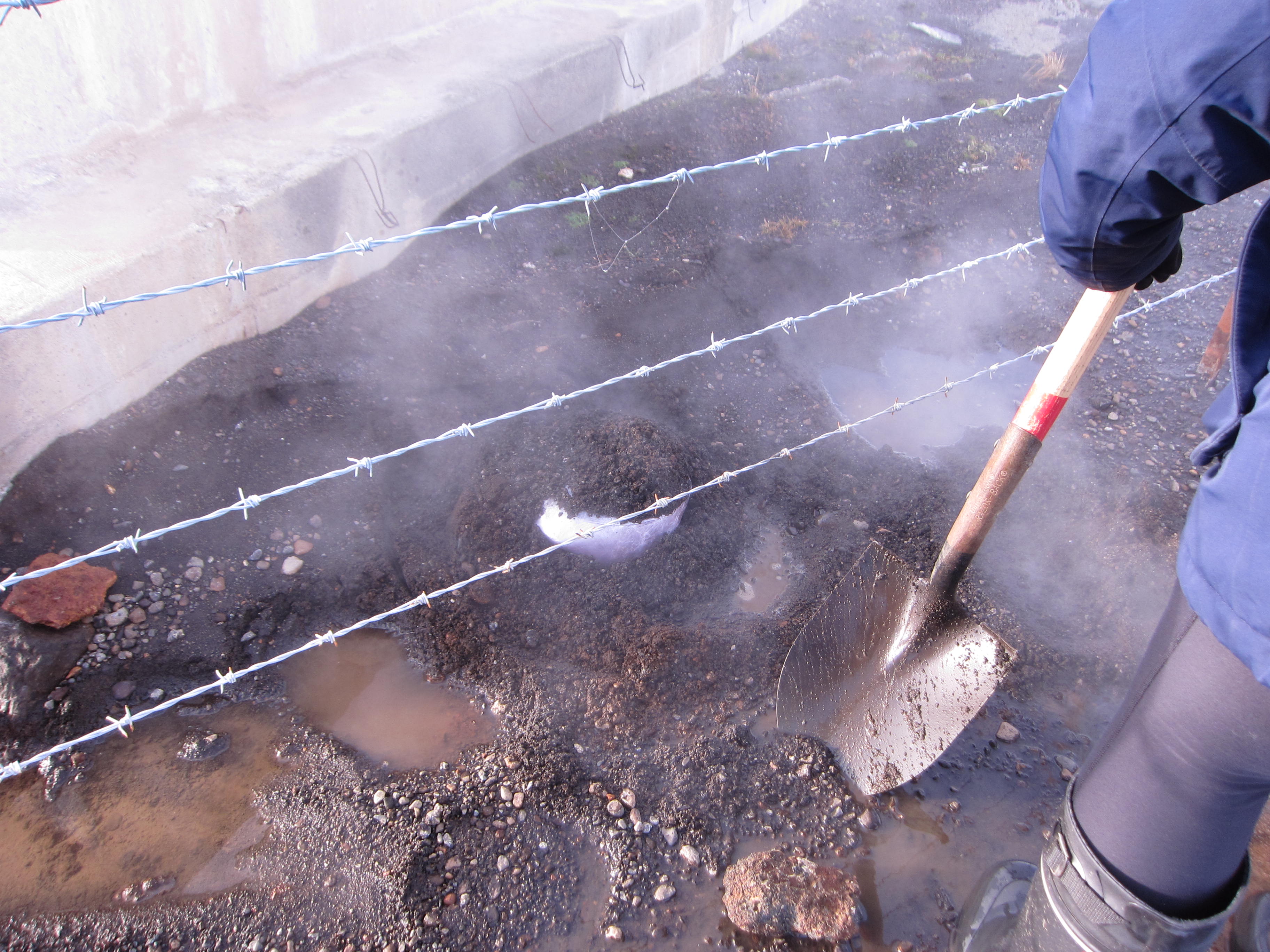
Next, she pulled the plastic off our freshly harvested pot and removed the lid.
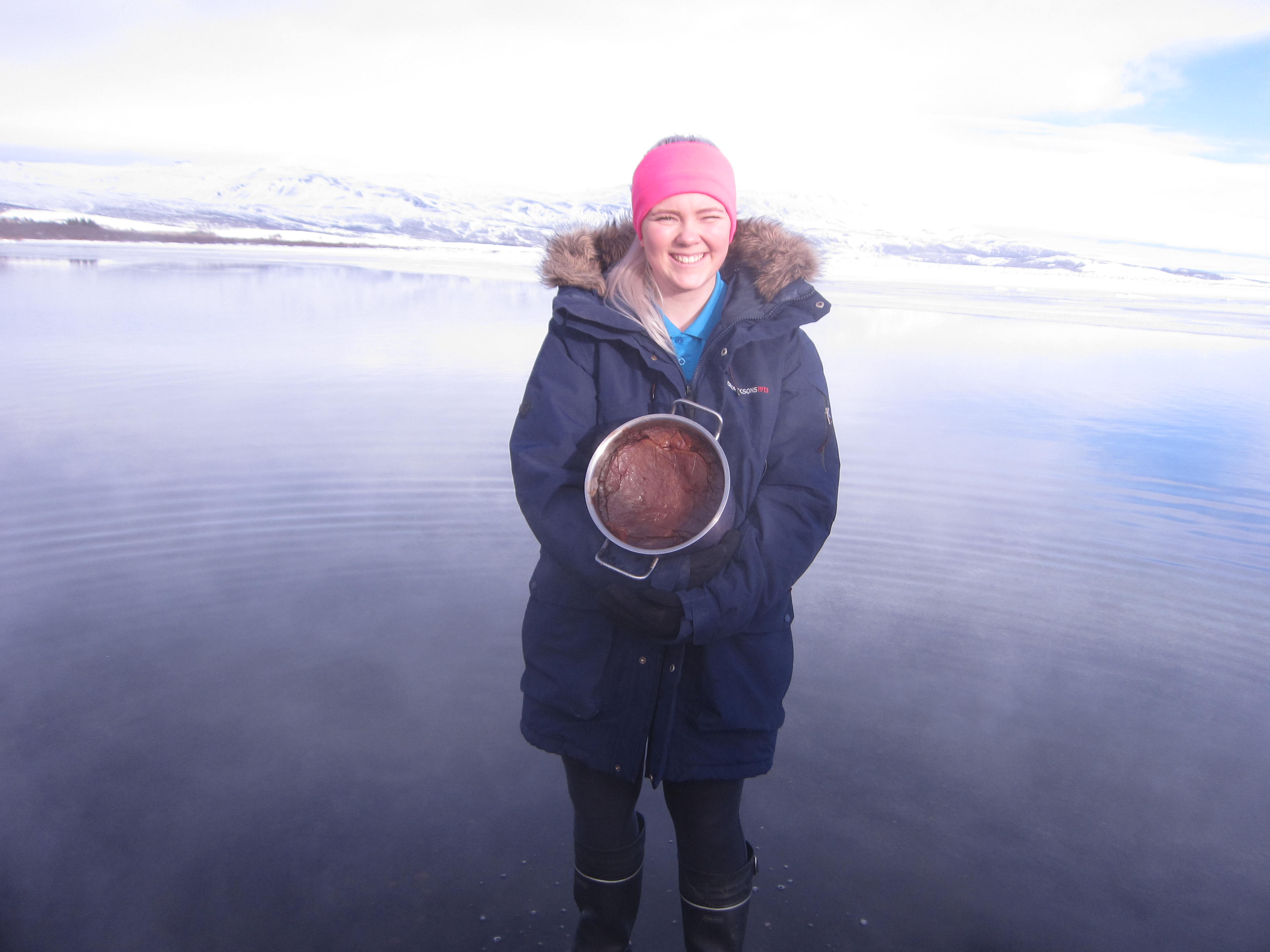
The bread was sunken in the middle, which told me it was not a yeasted bread. When asked, she said the ingredients were rye flour, baking powder, oil, salt, sugar, and water. The batter is poured into the pot, the pot is wrapped in cellophane to keep water and sand out, then it is baked in the ground near the geyser for 24 hours.
Then we went back inside to taste it.
The Taste Test
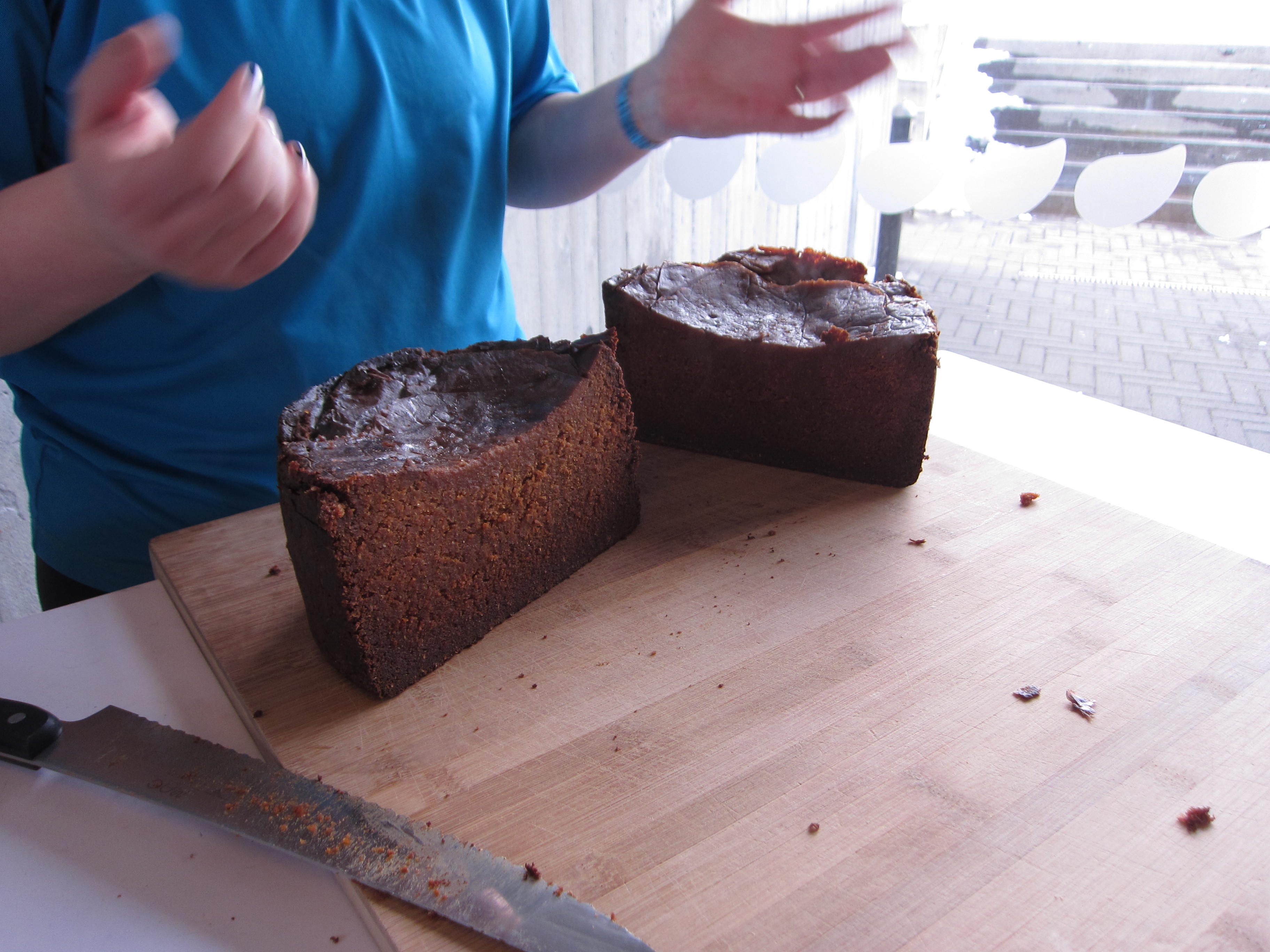
Our guide recommended a 50% ratio of butter to bread.
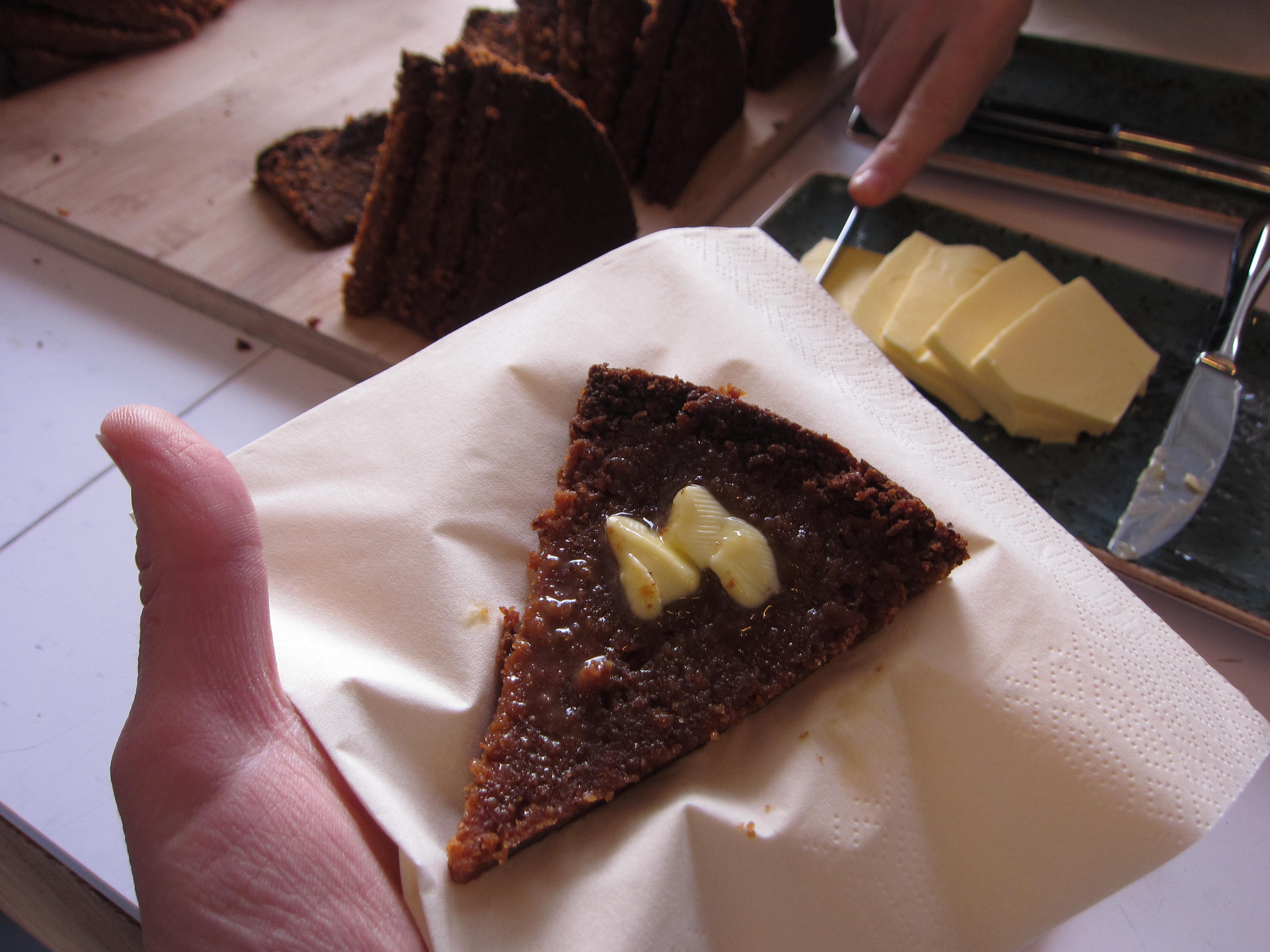
The bread was sweet (obviously because of the sugar) and more cake-like in texture than bread. It reminded us of a zucchini bread or sweet potato bread. It had no trace of earthy lava rock nor icy glacial waters, just delicious rye slow-cooked over 24 hours.
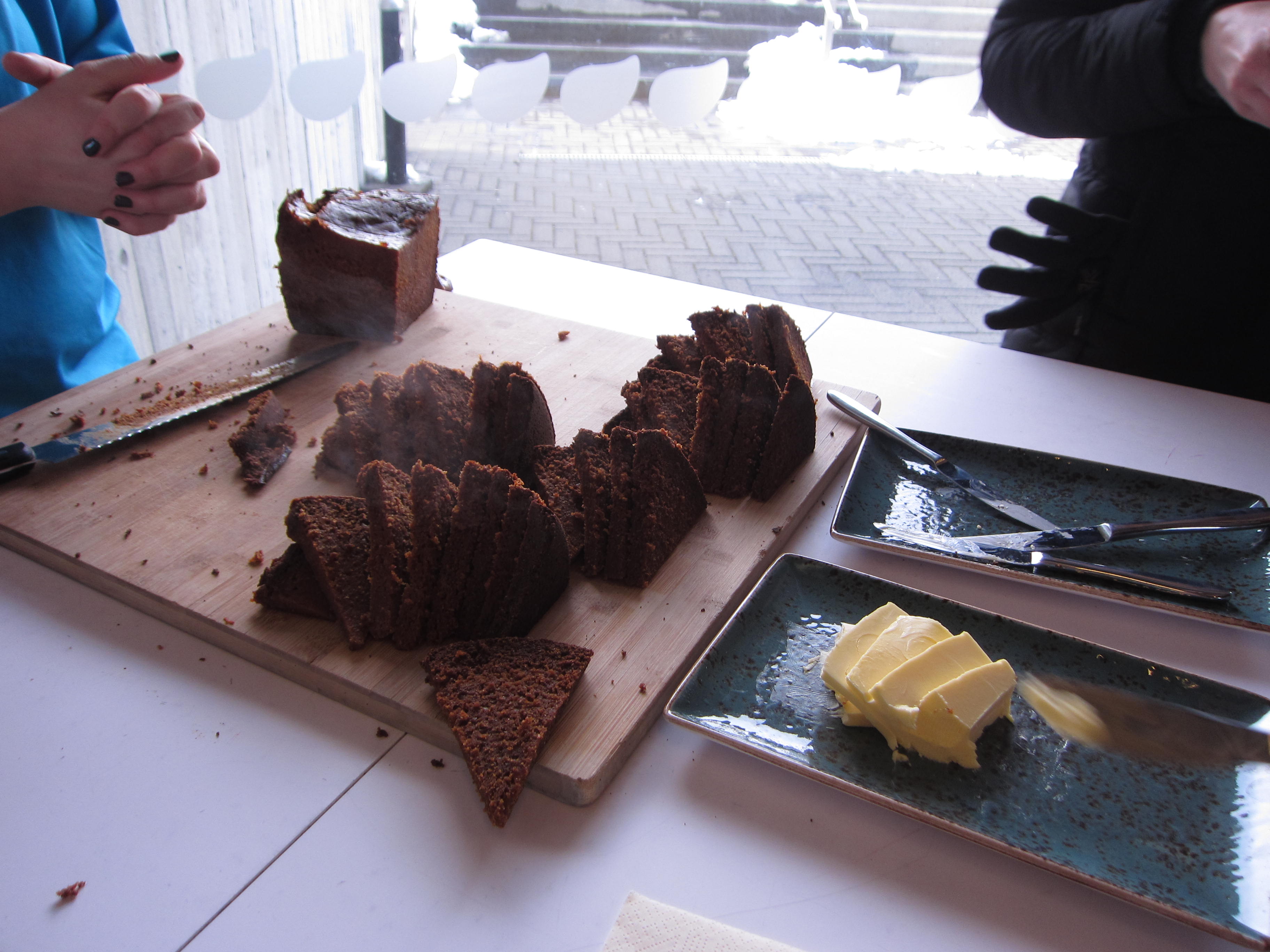
So if you happen to live near a geyser or volcano, you can try baking bread with the power of nature instead of electricity. The cost of the tour was 1500 ISK (around $15) in addition to a ticket to the spa.
Laugarvatn Fontana doesn’t take reservations, but since everyone is trying to get into the Blue Lagoon instead, there was no problem gaining entrance here or joining the bread bake, at least in winter. I hope you go sometime to experience this natural baking field trip with its delicious rewards.

